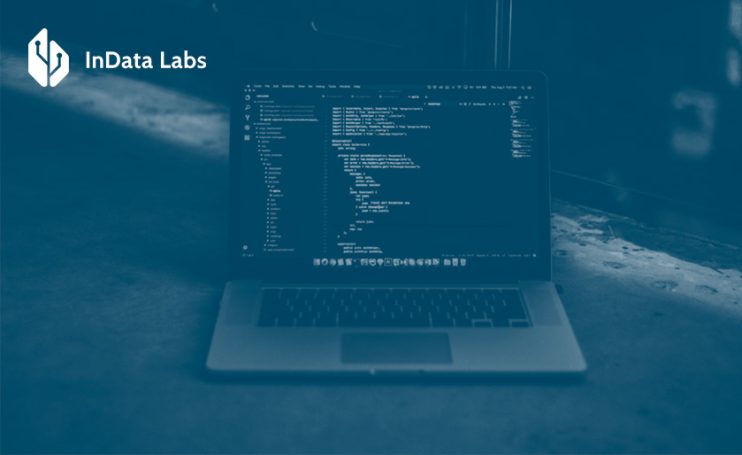Deep learning vs machine learning are two popular approaches in the field of artificial intelligence. Both of these techniques are used to develop intelligent systems that can learn and improve from data. Although these terms are often used interchangeably, they are not the same thing.
Let’s find out the difference between machine learning and deep learning.
The concept of machine learning
Comparing deep learning vs machine learning, the second one is a subfield of artificial intelligence that focuses on developing algorithms and models that enable computer systems to automatically improve their performance on a specific task through learning from data.

This is accomplished through the use of various statistical and mathematical techniques that allow computers to automatically improve their performance on a particular task, based on the patterns and insights discovered from the data. There are three main types of machine learning:
- Supervised learning
- Unsupervised learning
- Reinforcement learning
In supervised learning, the algorithm is trained on a labeled dataset, which means that each data point is associated with a specific label or output value. The algorithm then learns to make predictions based on the input data and the associated output labels.
Within unsupervised learning, the system, in contrast, is set on an unlabelled scope of information, which means that there are no predefined output labels. Instead, the program discovers patterns and structures in the data on its own, without any supervision or guidance.

Source: Unsplash
Talking about reinforcement learning, we refer to the algorithm that memorizes through a trial-and-error process. The program is given a set of possible actions to take in a particular environment, and it receives rewards or penalties based on its performance. The goal of reinforcement learning is to learn the best sequence of actions to take in order to maximize the rewards received.
Machine learning has a wide range of applications, including image and speech recognition, natural language processing, predictive analytics, recommendation systems, and autonomous vehicles. It is a powerful tool for enabling computer systems to learn and improve their performance on a wide range of tasks, without the need for explicit programming or human intervention.
Machine learning advantages
Machine learning has numerous benefits that make it an attractive technology for businesses and organizations across various domains. Here are some of the viral advantages machine learning solutions bring to business:
Automation
Machine learning can automate complex and repetitive tasks, saving time and increasing efficiency. This can help businesses to reduce costs and improve productivity.
Personalization
The program’s algorithms can analyze data to identify patterns and preferences, enabling businesses to offer personalized experiences to their customers. Thus, companies achieve increased customer satisfaction and loyalty.
Improved decision-making
Implementing a solution with ML, you’ll be able to research large amounts of data to identify patterns and insights that may not be immediately apparent to humans. This can help businesses to make more informed and data-driven decisions.

Source: Unsplash
Predictive analytics
It’s the best way to get the most from historical data to predict future outcomes and trends. Due to this fact, ML can help to anticipate demand, identify potential risks, and make proactive decisions.
Enhanced security
ML is a robust tool to identify patterns of fraudulent activity and anomalies in data, assisting businesses in preventing and detecting fraud and cyber attacks.
Improved customer service
Organizations often opt for this solution to analyze customer data to identify patterns and trends, allowing to offer more personalized and responsive customer service.

Source: Unsplash
Innovation
Machine learning can enable businesses to develop new products and services that were previously not possible. For example, machine learning development algorithms are used in autonomous vehicles, speech recognition, and facial recognition technologies.
What deep learning is
Conducting the Deep learning vs machine learning comparison, we can state that the first technology is a subfield of machine learning that involves the use of artificial neural networks to learn and identify complex patterns in data. It is inspired by the structure and function of the human brain, with the artificial neural networks consisting of layers of interconnected artificial neurons that can perform tasks such as image and speech recognition, natural language processing, and decision-making.
The term “deep” refers to the fact that these neural networks have multiple layers, which allows them to learn increasingly complex representations of the input data. Each layer of the neural network extracts a different level of abstraction from the input data, with the final layer producing the output or prediction.

Source: Unsplash
Considering machine learning vs deep learning, the second one has been used to achieve breakthroughs in a great variety of products, comprising computer vision, speech recognition, natural language processing, and autonomous vehicles. Its success can be attributed to its ability to automatically learn and identify patterns in data without the need for explicit programming or feature engineering.
However, machine learning and deep learning difference imply that deep learning models typically require large amounts of data and computing power for training, as well as careful tuning of various hyperparameters.
Deep learning advantages
The difference between machine learning and deep learning almost lacks in their benefits, as both machine and deep learning have pretty much to offer to companies that actively implement this technology to achieve a new level on the market.
Let’s list the vital pros to making a comprehensive machine learning versus deep learning comparison:
Improved accuracy
Deep learning algorithms can achieve higher accuracy than traditional machine learning algorithms, especially in domains such as computer vision, speech recognition, and natural language processing.
Reduced need for feature engineering
This technology’s models can automatically learn hierarchical representations of the data without the need for feature engineering. This can save time and resources and can also enable the discovery of new features that may not be immediately apparent to humans.

Source: Unsplash
Increased flexibility
Solutions based on this technology can be trained on various types of data, including structured and unstructured data, images, and text. That’s why they are highly flexible and versatile.
Better generalization
With deep learning, you can generalize better to new data than traditional machine learning models, especially when trained on large datasets, so the models are more robust and reliable.
Scalability
The algorithms of DL can be scaled up to handle large and complex datasets, using parallel computing and distributed systems. Thus, with a machine and deep learning, businesses are enabled to analyze and process large amounts of data efficiently.

Source: Unsplash
Innovation
Similar to ML, deep learning can allow companies to invent and offer new original, and unique products and services. In practice, deep learning models are used in autonomous vehicles, speech recognition, and facial recognition technologies.
Reduced human intervention
Frequent and complicated duties can easily be handled by DL, reducing the need for human intervention. This can save time and increase efficiency, and can also reduce the risk of errors.

Source: Unsplash
This list of deep learning advantages makes it one of the most powerful tools to digitize the business.
What is the difference between machine learning and deep learning
The difference between deep learning and machine learning is the approach used to learn from data. Machine learning is a broader term that encompasses a variety of techniques and algorithms, while deep learning is a specific subset of machine learning that uses deep neural network to learn from data.
In particular, the difference between deep learning and machine learning algorithms lies in the fact that ML typically requires human experts to manually extract relevant features from the data, which can then be used as input to the algorithm.
In contrast, deep learning models automatically learn hierarchical representations of the data without the need for feature engineering. This is achieved through the use of deep neural networks that consist of multiple layers of interconnected artificial neurons, comprising the difference between AI machine learning and deep learning.

Source: Unsplash
Another critical distinction between machine learning and deep learning is the amount of data required to train the models. Deep learning models typically need much larger datasets than traditional machine learning models, in order to learn the complex patterns and relationships in the data.
However, deep learning models can often achieve higher accuracy and better generalization performance than traditional machine learning models, especially in domains such as computer vision, speech recognition, and natural language processing.
Use cases of AI vs machine learning vs deep learning
Deep learning and machine learning have numerous use cases across a wide range of industries and domains. Here are a few examples:
Natural Language Processing
Machine learning and deep learning are used in natural language processing to analyze and understand human language. Some examples of natural language processing applications include sentiment analysis, chatbots, and machine translation.

Source: Unsplash
Fraud detection
Machine learning and deep learning algorithms are used to detect fraudulent activities such as credit card fraud, insurance fraud, and online scams. They analyze transactional data to identify patterns and anomalies that may indicate fraudulent activity. This makes these technologies almost integral for fintech app development.
Recommendation systems
Recommendation systems use machine learning and deep learning algorithms to suggest products, services, or content to users based on their past behaviors or preferences. Machine learning and deep learning algorithms are commonly used in E-commerce, social media, and entertainment applications.

Source: Unsplash
Healthcare
Machine learning is being used in various healthcare applications, such as medical image analysis, diagnosis prediction, and drug discovery. For example, deep learning models have been developed to detect and diagnose various medical conditions such as cancer, Alzheimer’s disease, and cardiovascular disease.
Autonomous vehicles
Machine learning and deep learning are used in autonomous vehicles to enable them to perceive their environment and make decisions based on that perception. These algorithms help vehicles to detect and avoid obstacles, navigate complex road networks, and make decisions in real time, which raises the value of machine learning for business.

Source: Unsplash
In outline, machine learning and deep learning have a wide range of applications across various industries, including computer vision, natural language processing, fraud detection, recommendation systems, healthcare, and autonomous vehicles. Machine learning and deep learning algorithms are transforming the way businesses operate and the services they offer, leading to increased efficiency, productivity, and innovation. Custom AI solutions also may be pretty beneficial to reach those goals.
Summarize
While AI machine learning and deep learning are used to learn from data and make predictions, deep learning is a specific subset of machine learning that uses deep neural networks to learn hierarchical representations of the data automatically, without the need for feature engineering. Is deep learning and machine learning same?
Considering AI deep learning and machine learning, DL models typically require larger datasets and more computing resources for training. Still, they can achieve higher accuracy and better generalization performance than traditional machine learning models in certain domains.
Author bio
Yuliya Melnik is a technical writer. She is passionate about innovative technologies that make the world a better place and loves creating content that evokes vivid emotions.
Level up your business with technology
Choosing between machine learning and deep learning for your project? Get a consultation from our expert and see what technology suits you best.



